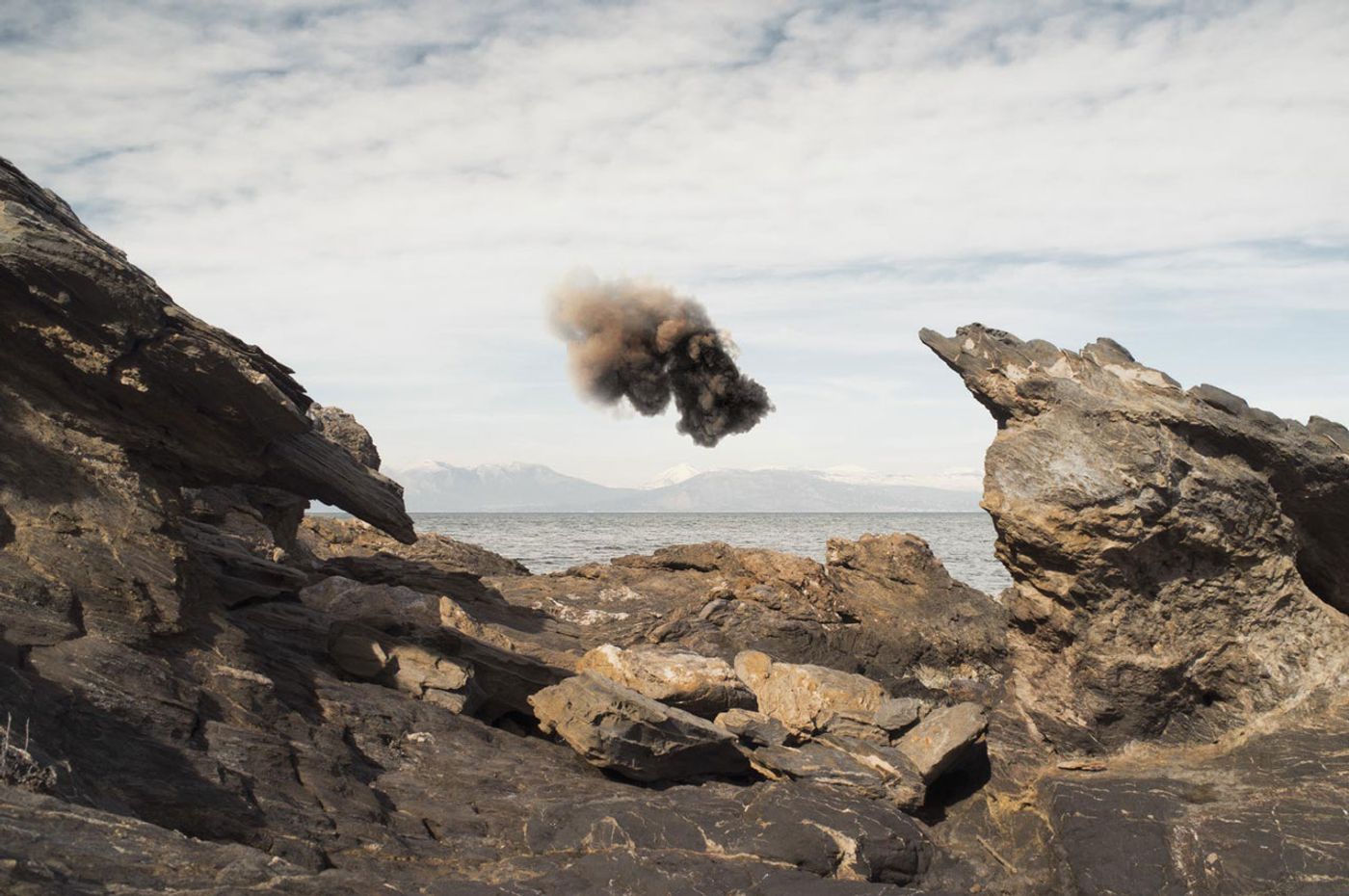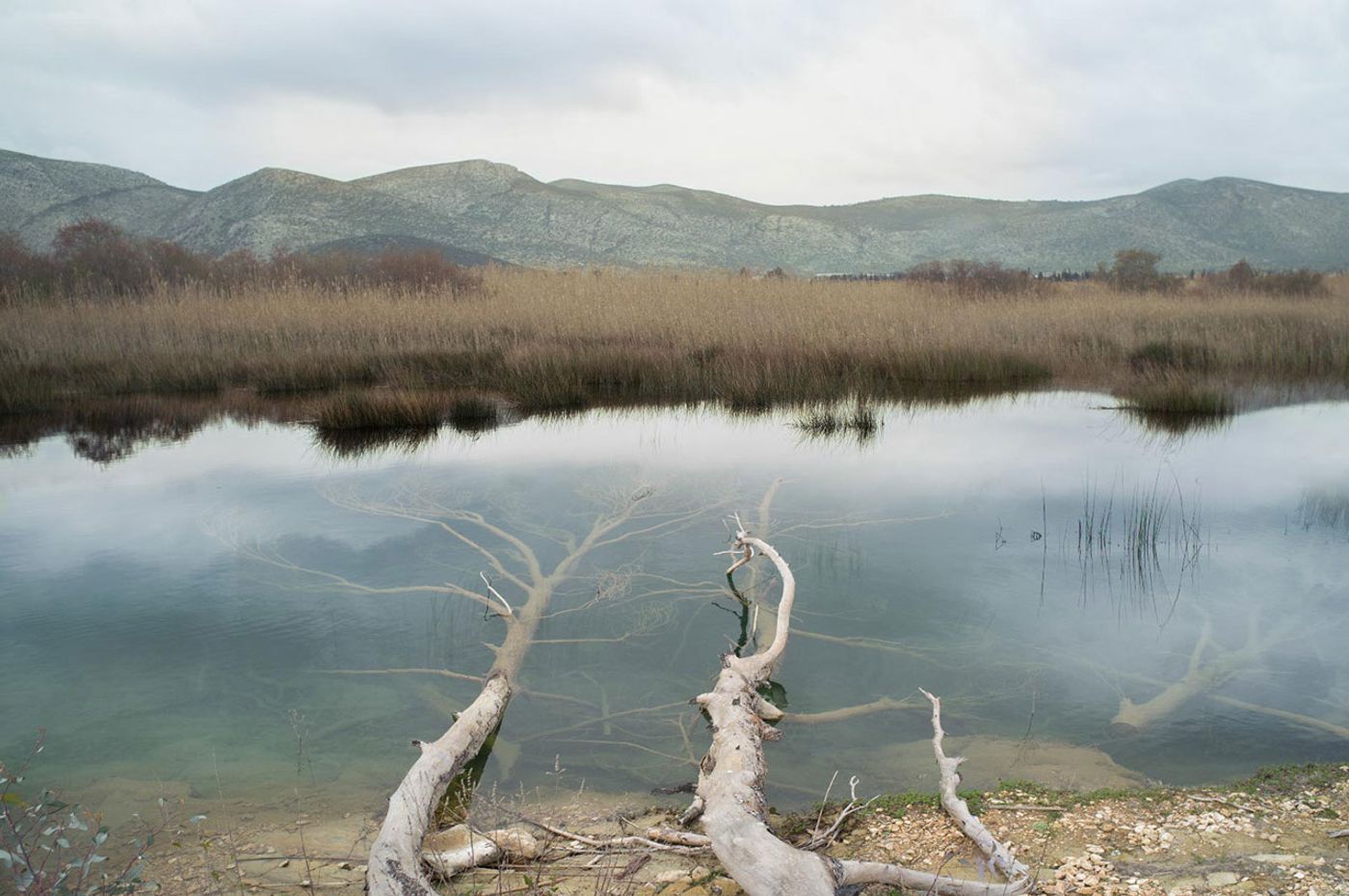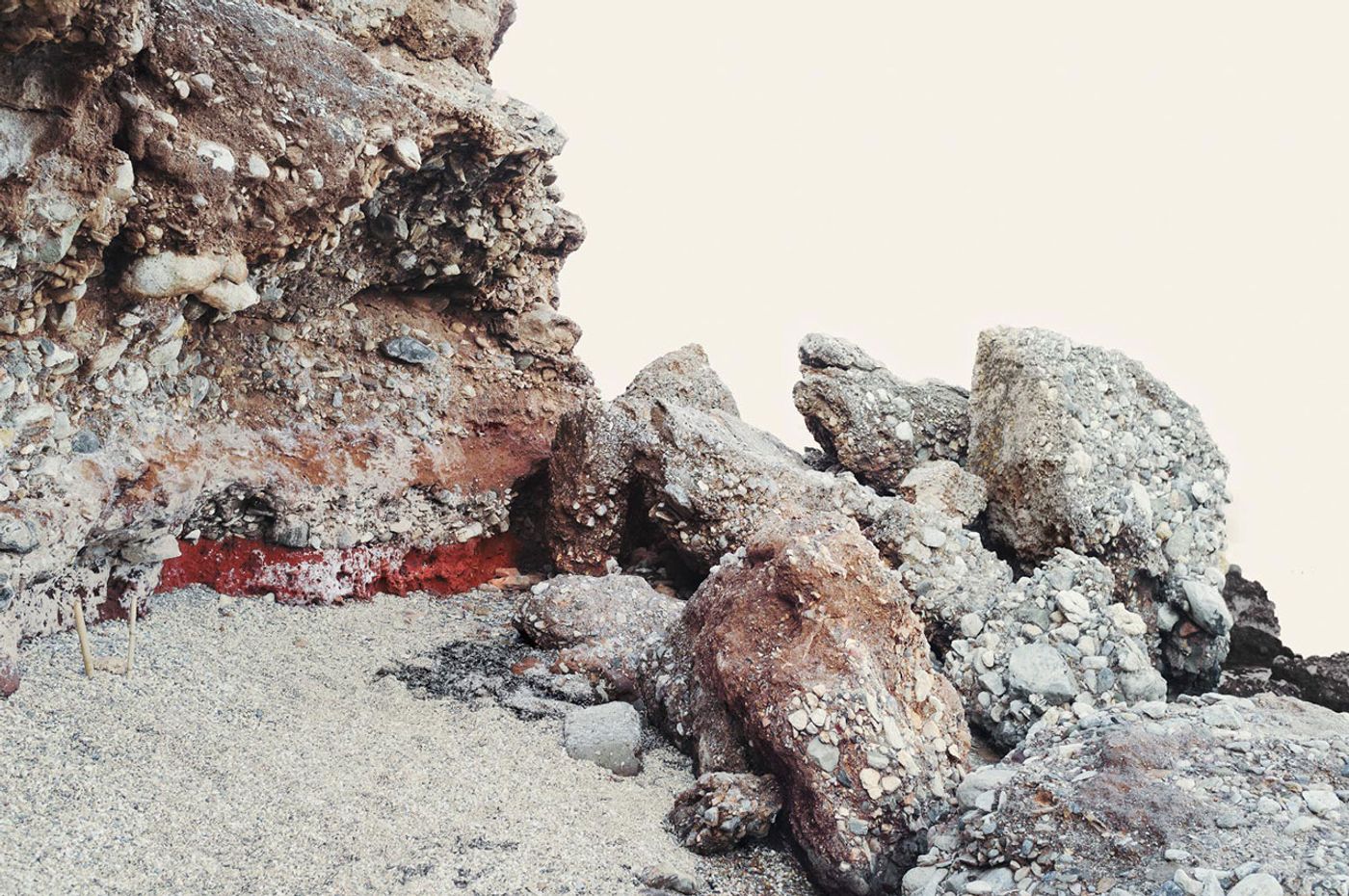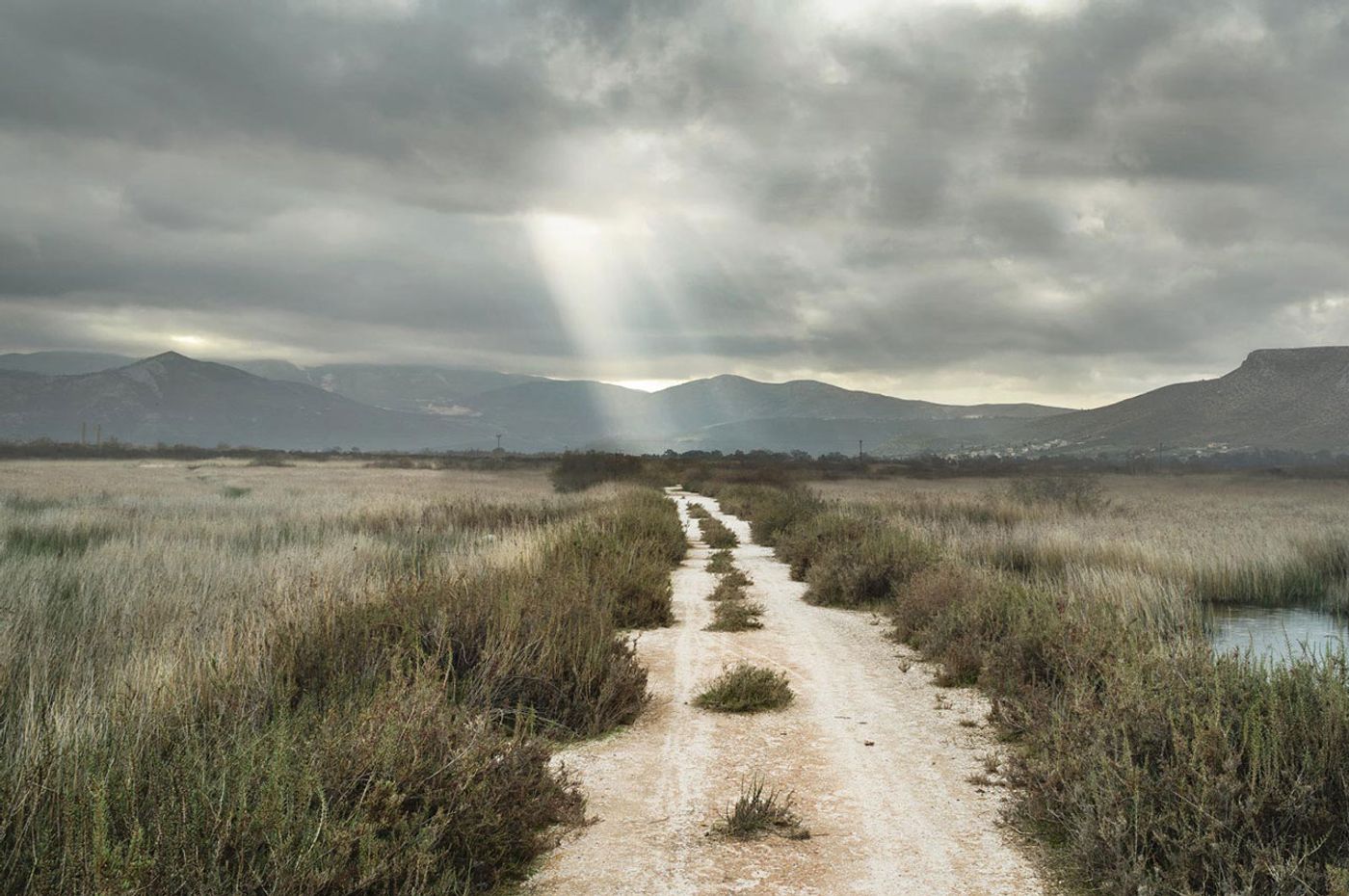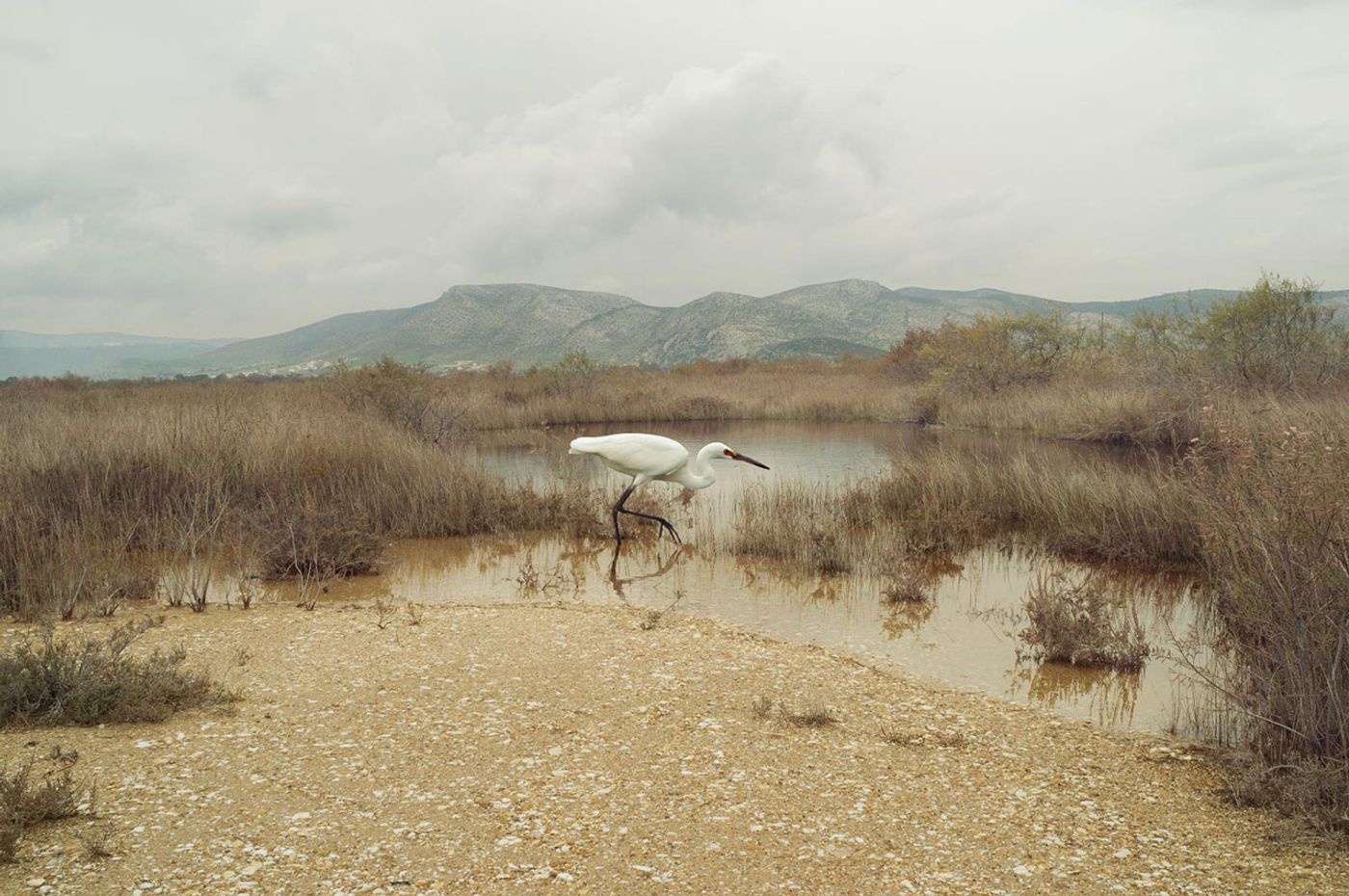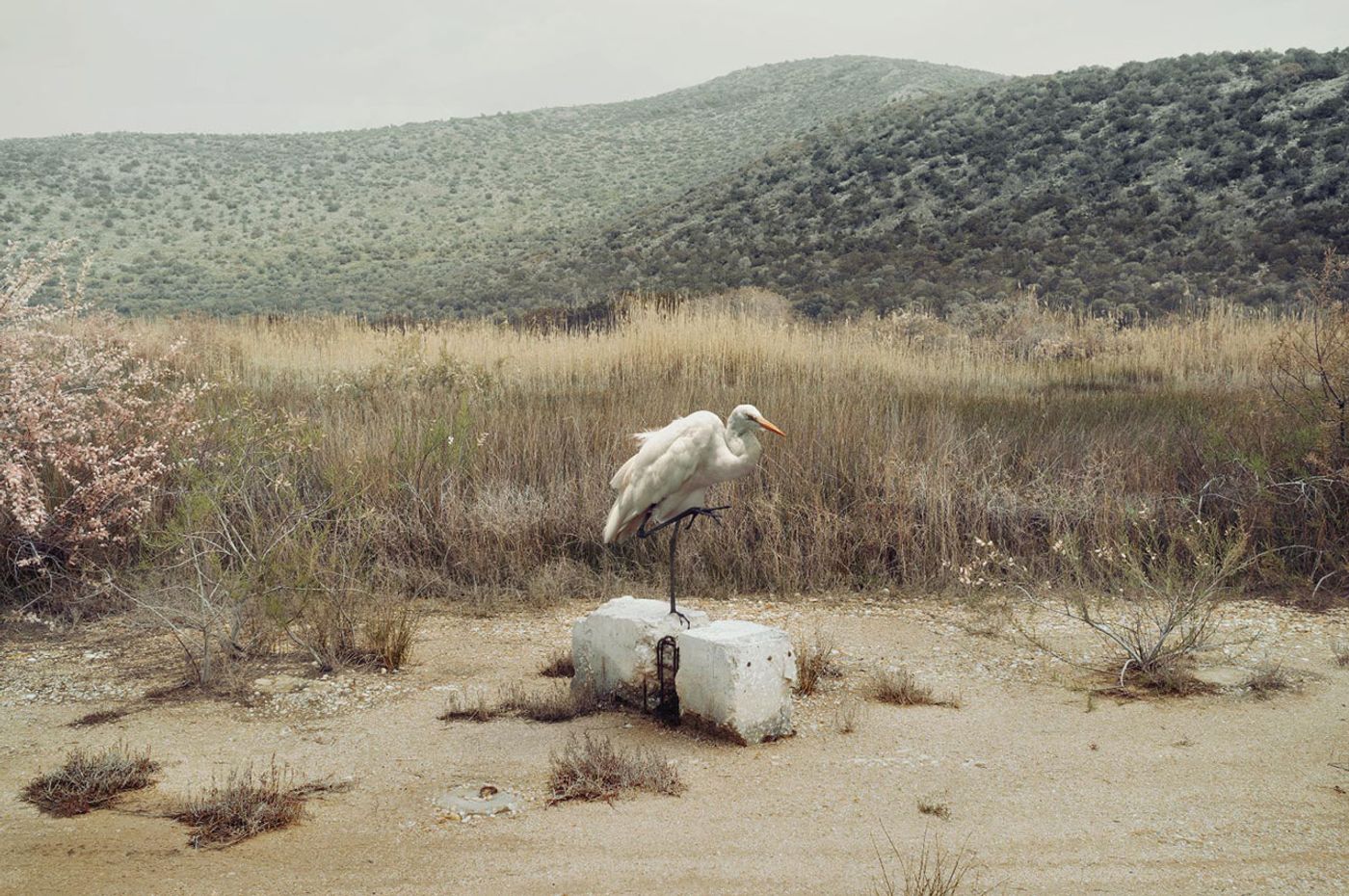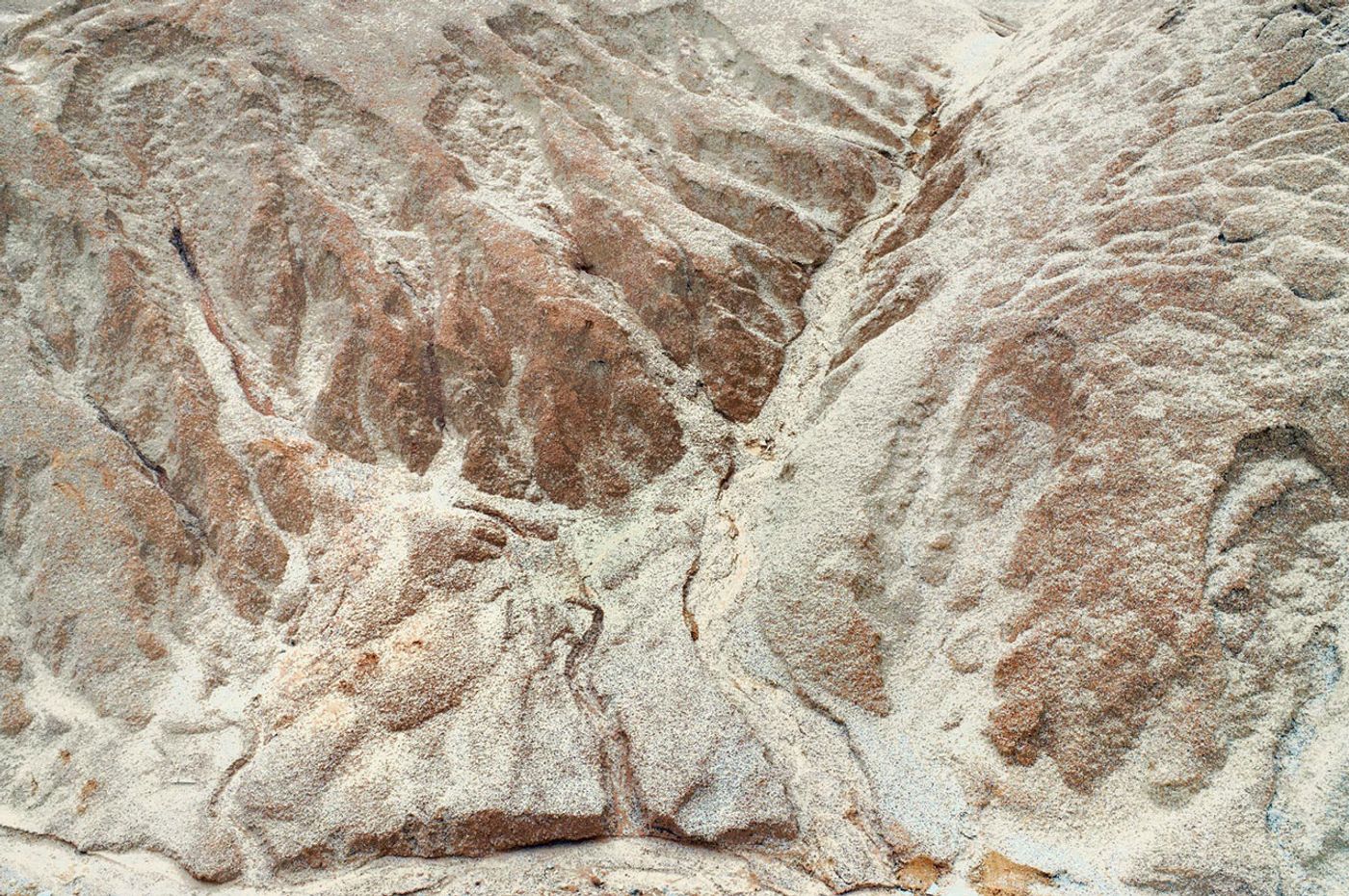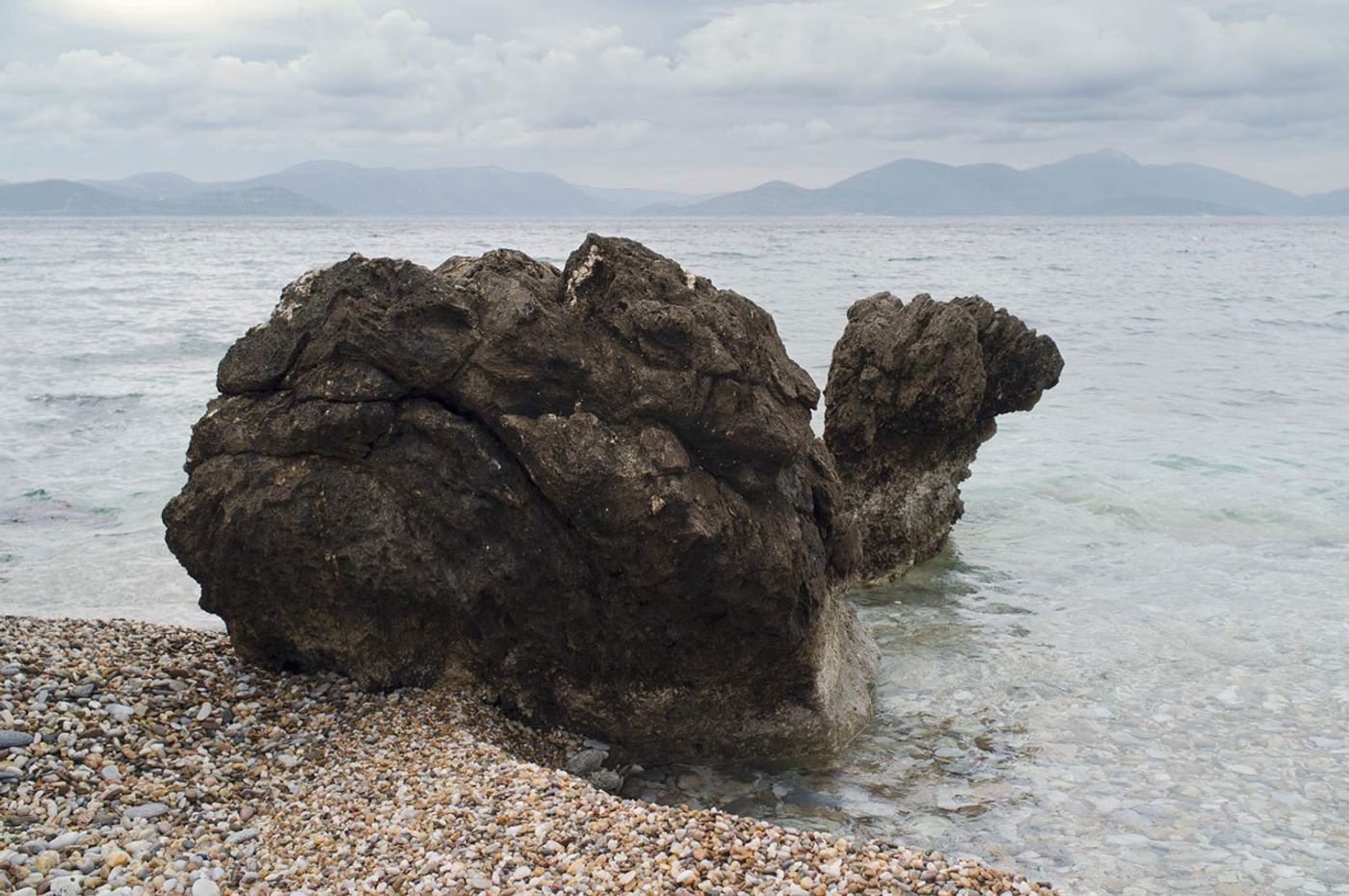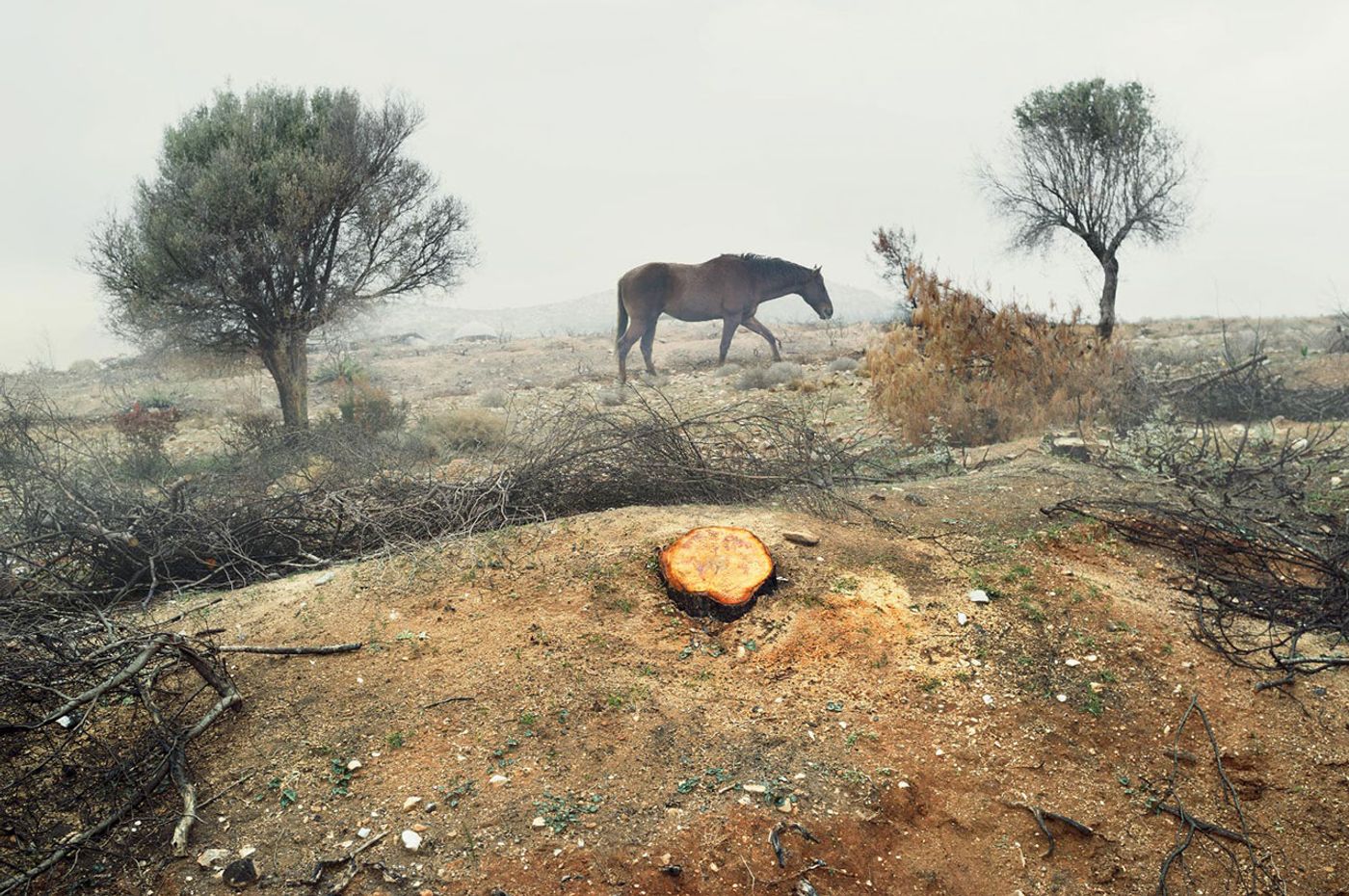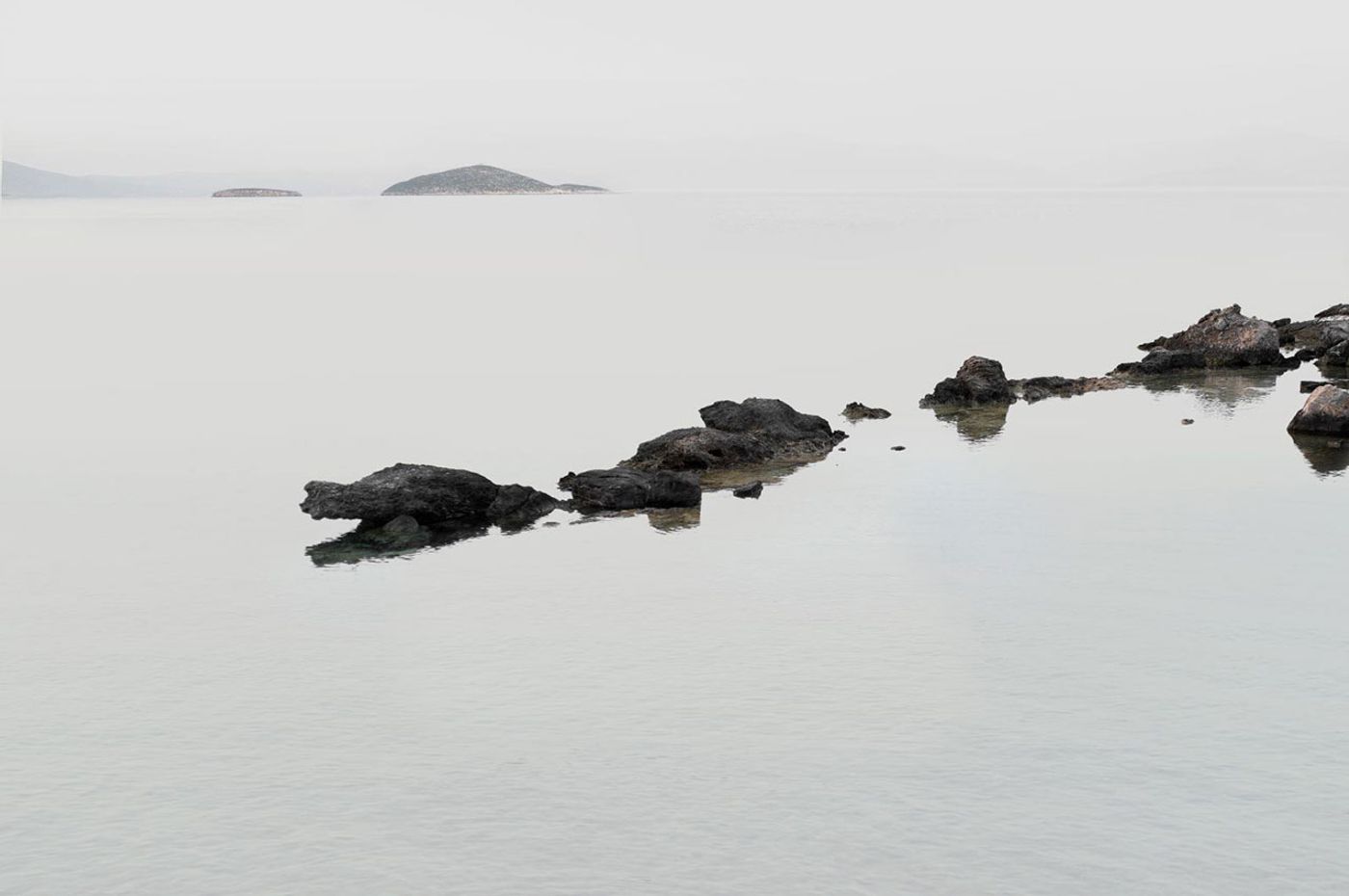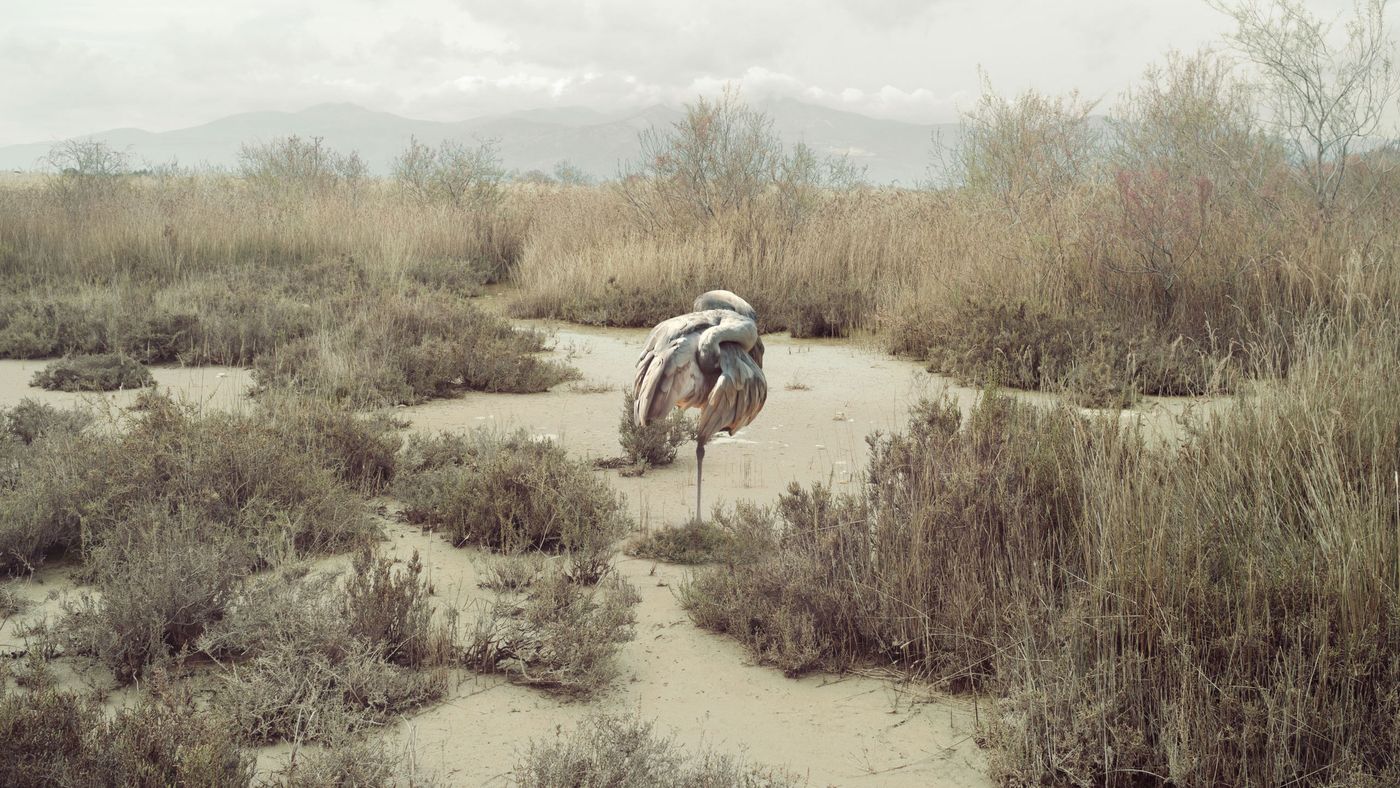
Uninterpreted Dreams and other Divinations by Petros Koublis
Words by Kiriakos Spirou
Location
In his latest body of work, Greek photographer Petros Koublis presents a series of images that, as he explains, “focuses on the way we perceive the world through our senses.” Resulting from his recent research in the writings of the Neoplatonic school and the ‘Oneirokritika’ treatise by Ancient Greek diviner Artemidorus Daldianus, the ‘In Dreams’ series was not created as a visualisation of that time’s philosophical thought, but was rather conceived as a process that seeks to bypass the mind in order to “release the perceiving force of our senses.” Filled with dream-like imagery and the compelling visual sensibility that has earned Koublis’ international acclaim, the series reveals a daring experimental mood, as well as a deep understanding of how the visual work of art can summon our other senses in a way that is more related to the dark channels of intuition and reflexes than the conscious mind.
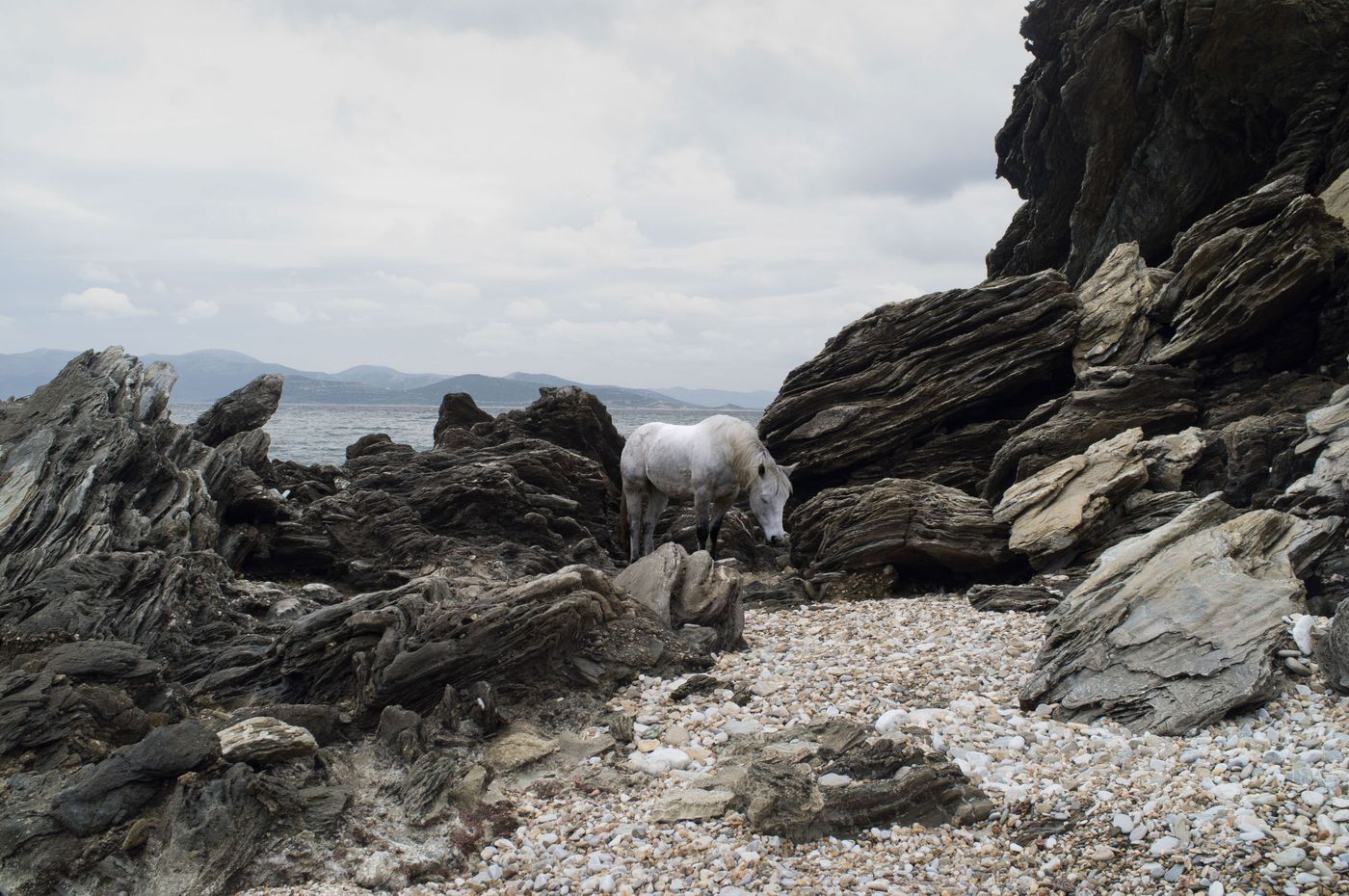
"Itera: Clothed only in the tide's acute weaving murmur" Photo © Petros Koublis.
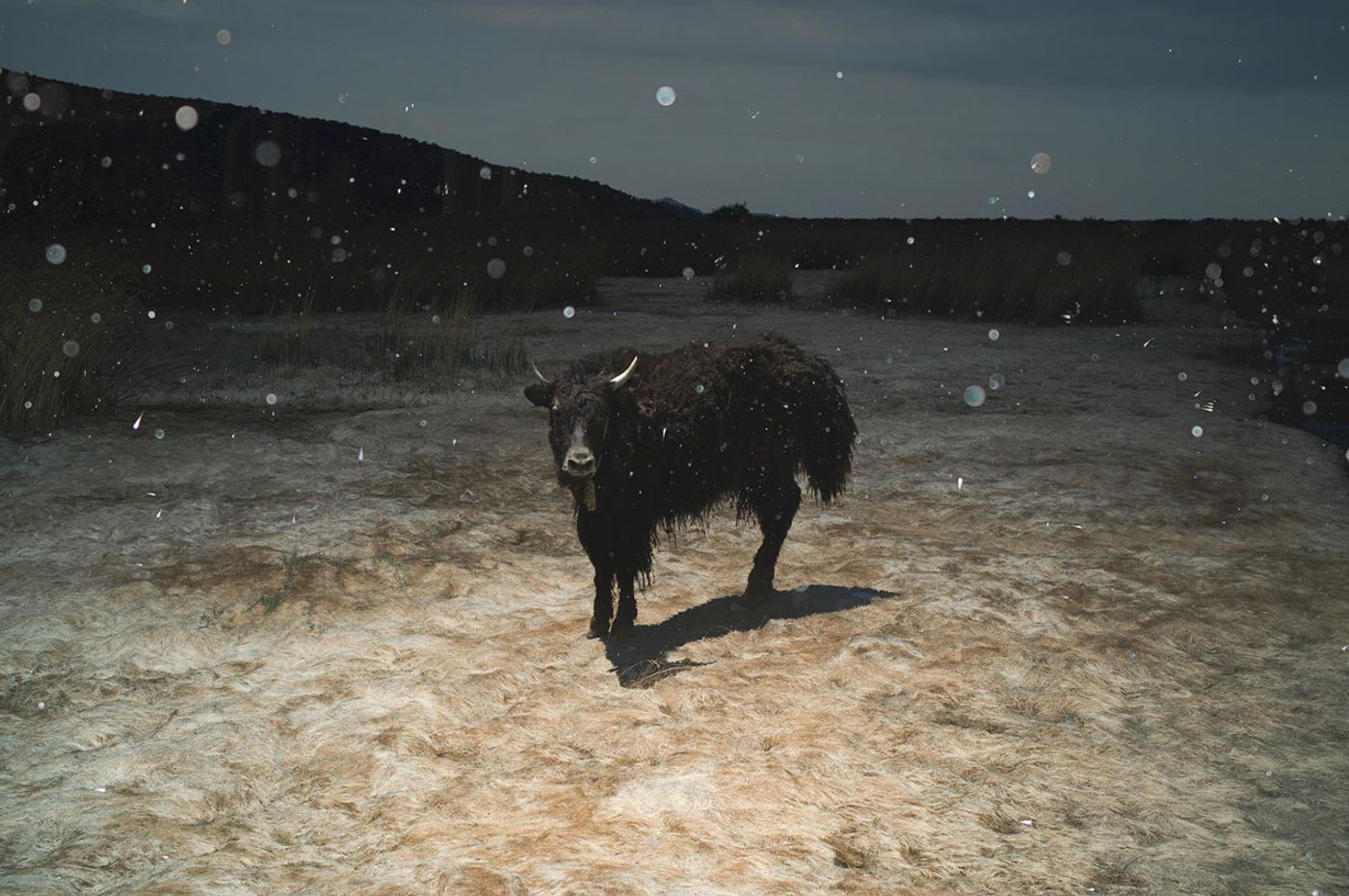
"Imber: Nobody,not even the rain,has such small hands" Photo © Petros Koublis.
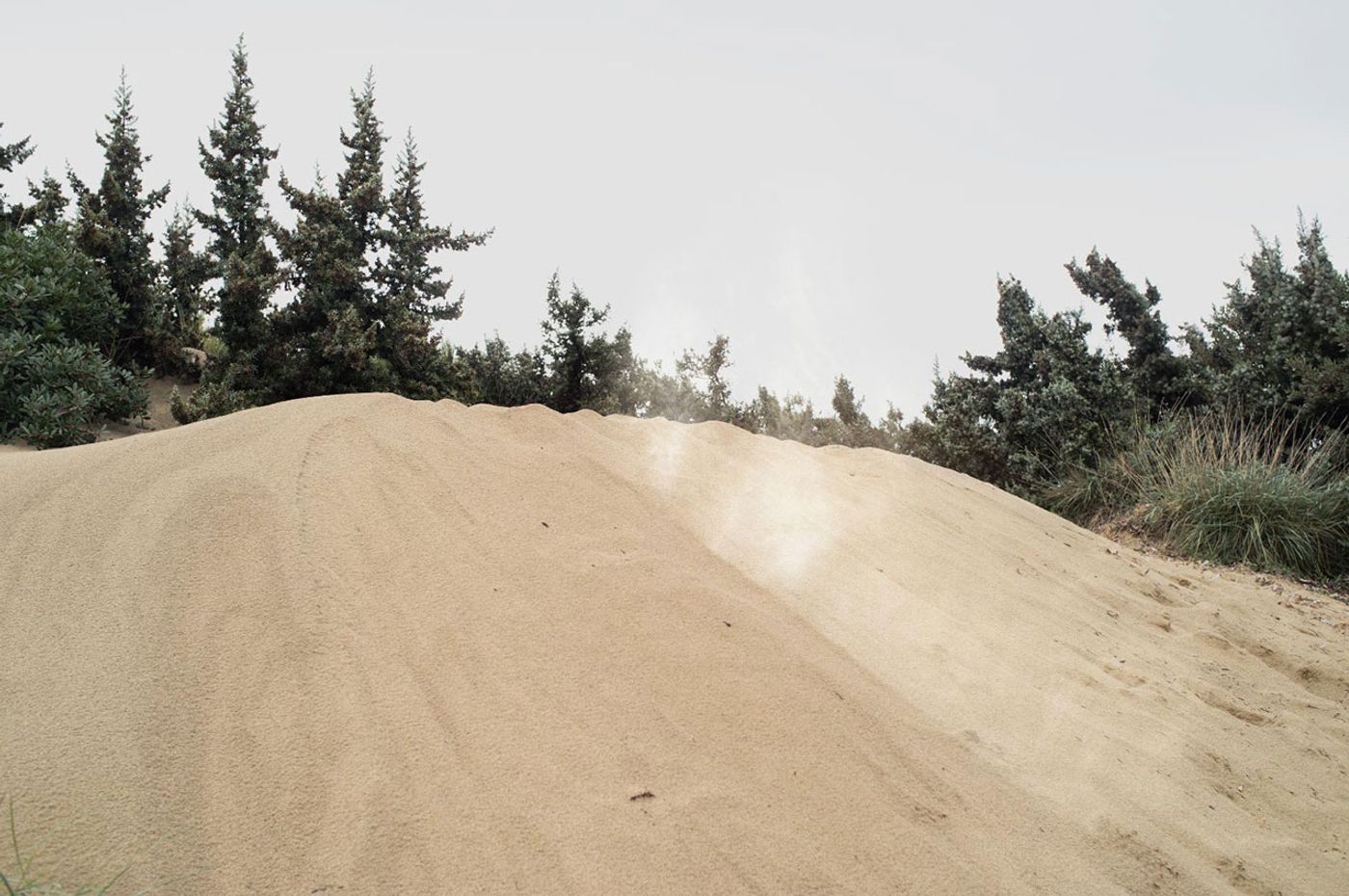
"Pellem: If multiplied by twice infinity could never equal one" Photo © Petros Koublis.
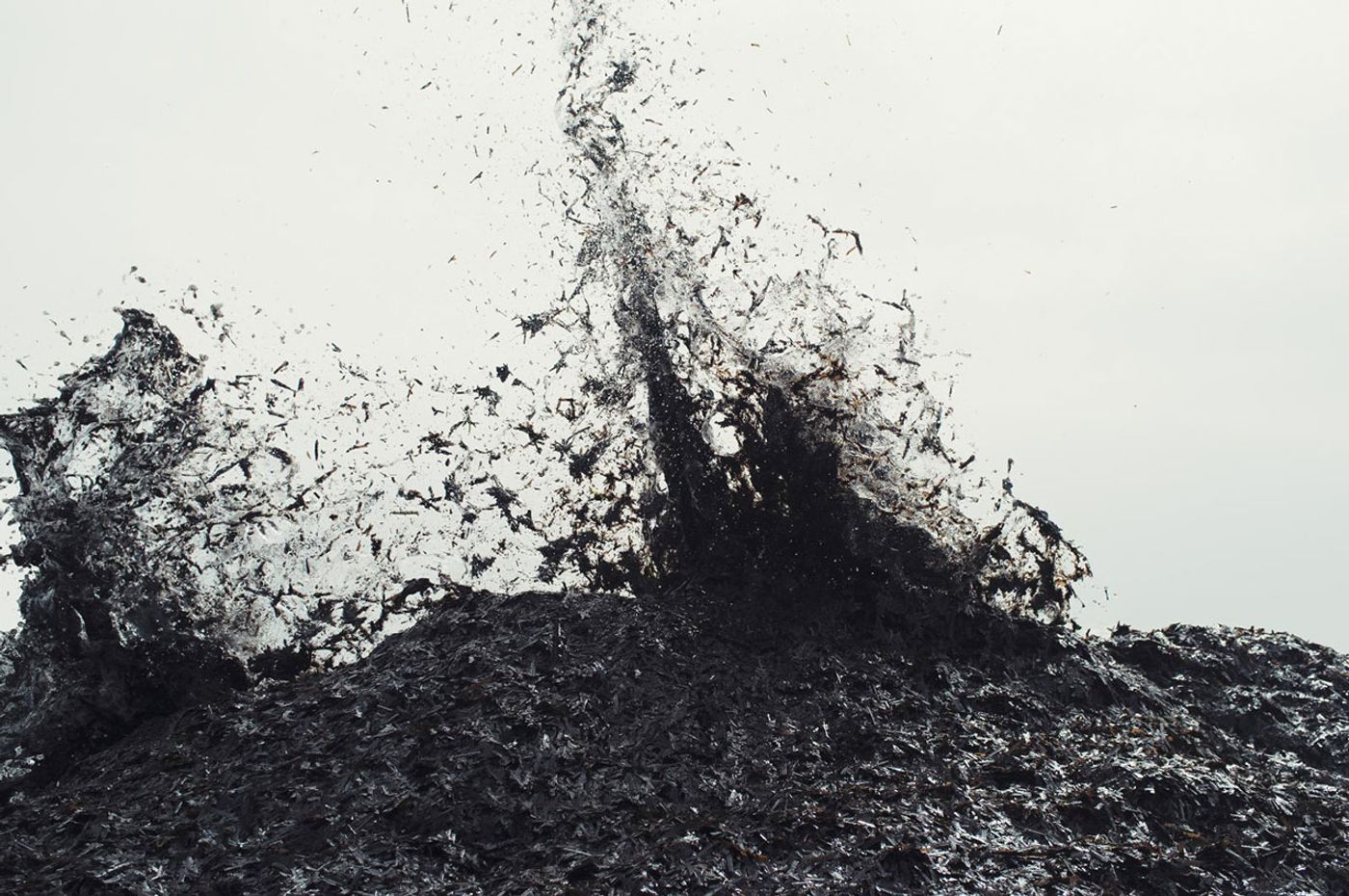
"Sparagma: A constellation passionately breaks into night" Photo © Petros Koublis.
Shot exclusively outdoors in Greece, the ‘In Dreams’ series employs a deceivingly commonplace subject matter, namely empty landscapes, bare rocks, the sea and animals that stare at the camera. What strikes us however is the mystery and stillness surrounding each scene, from a single sheep standing next to a puddle in the middle of an arid expanse, to a weathered piece of rock that looks like a sculptured head in profile. The captions that accompany the images are like small poems that seem to be part of the depicted scene, and provide us with hints as to what might have happened at that particular moment: an infinity made manifest in a humble cloud of dust blown over an ivory dune, a voice emanating from a dead-still sea, or a seed riding a gust of wind across a field.

"Mantra: Out of more find than seeks" Photo © Petros Koublis.
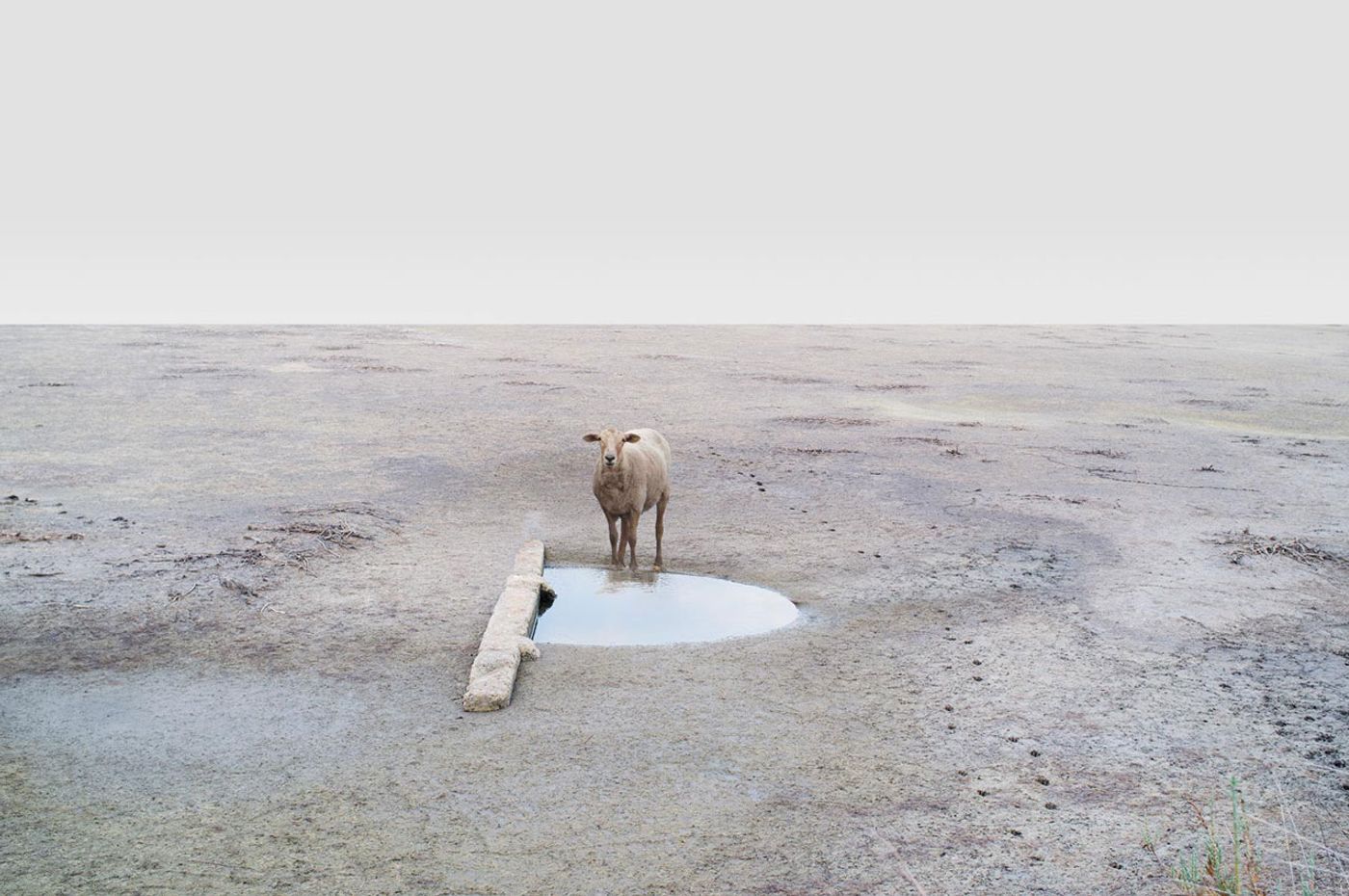
"Alsus: Through the cold perfect night whisperless to mar" Photo © Petros Koublis.
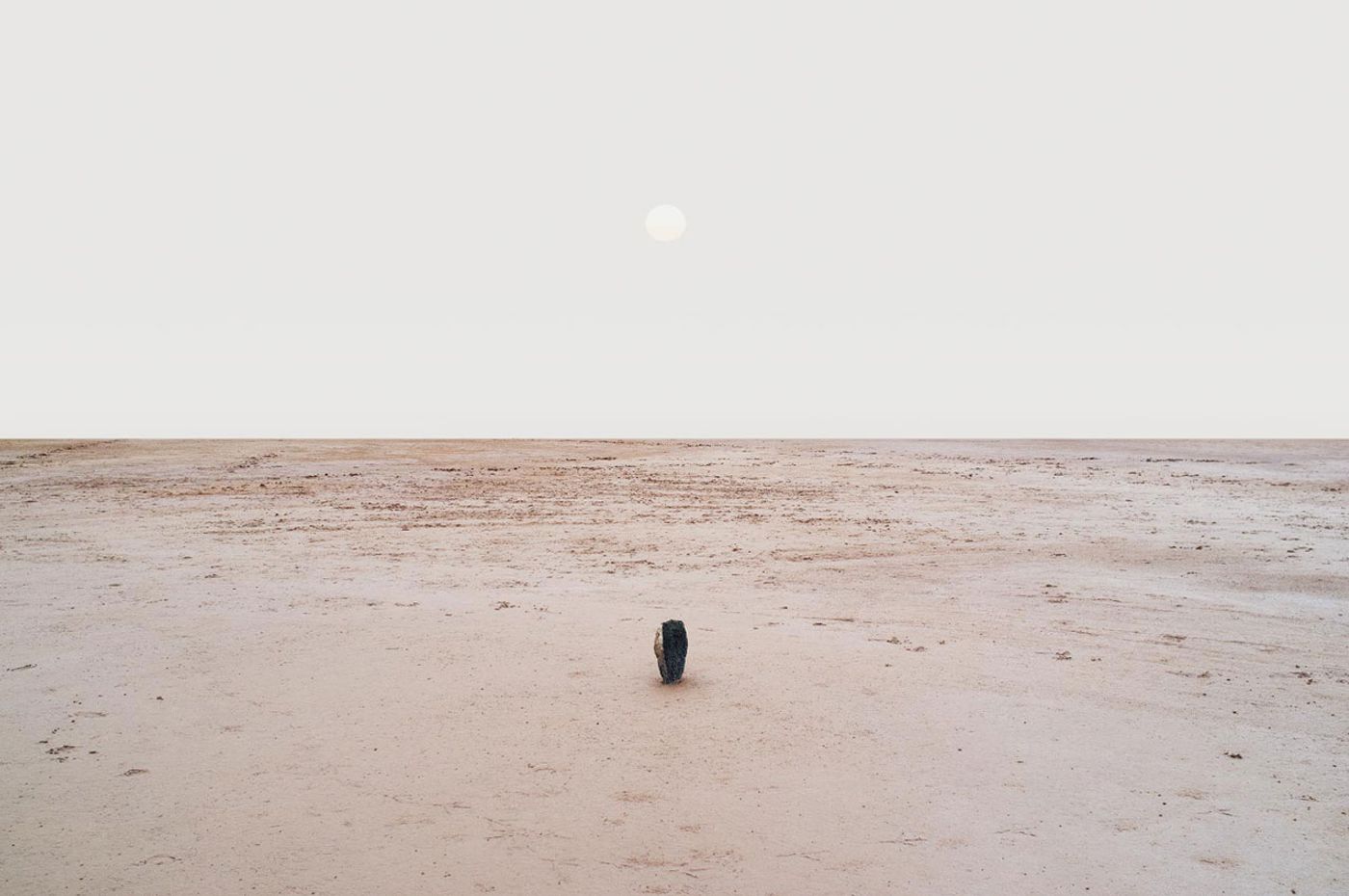
"Symbolo: An edged nothing begins to prune" Photo © Petros Koublis.
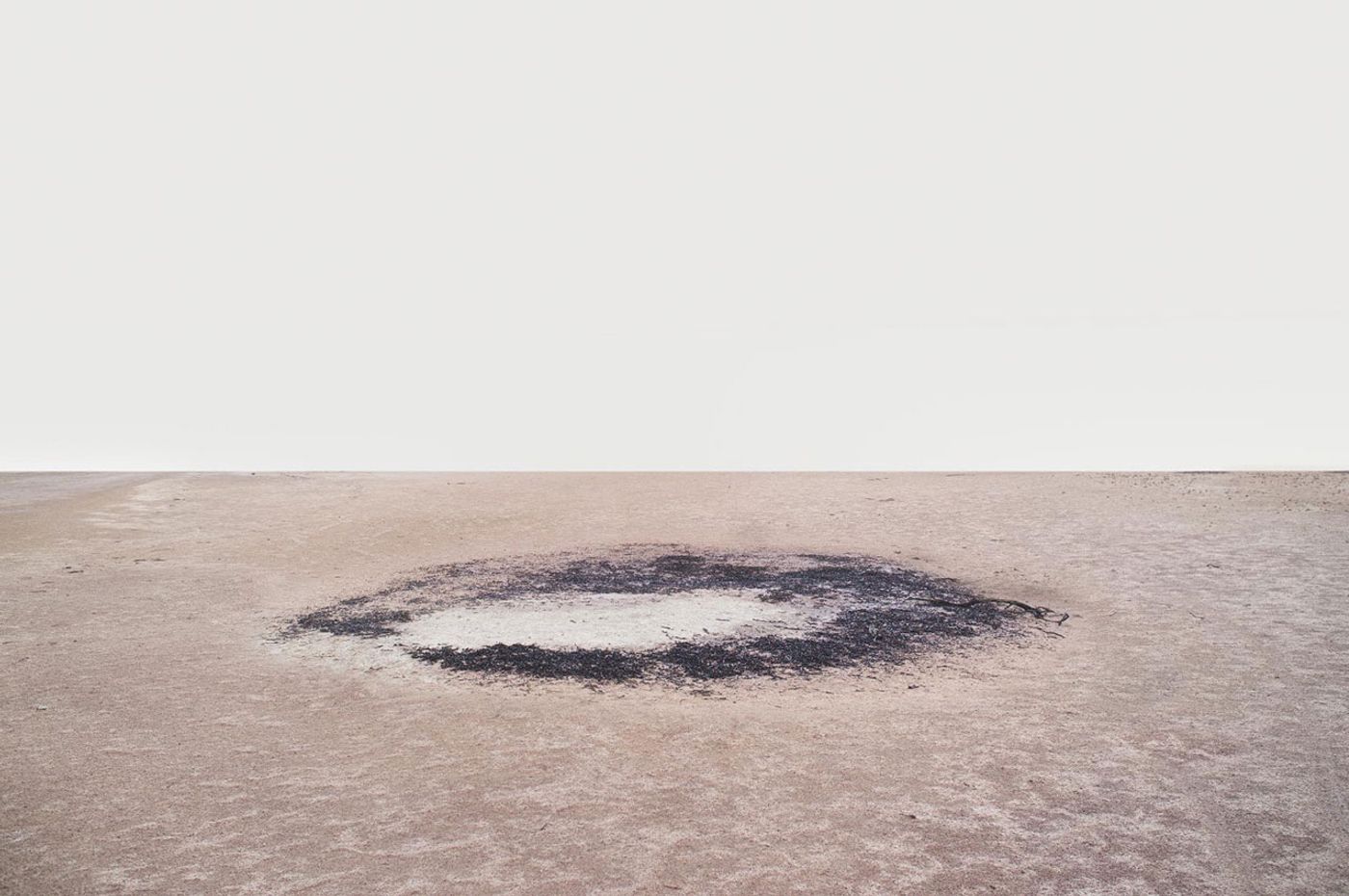
"Inlac: Or possibly there drift a pulseless blur of paleness" Photo © Petros Koublis.
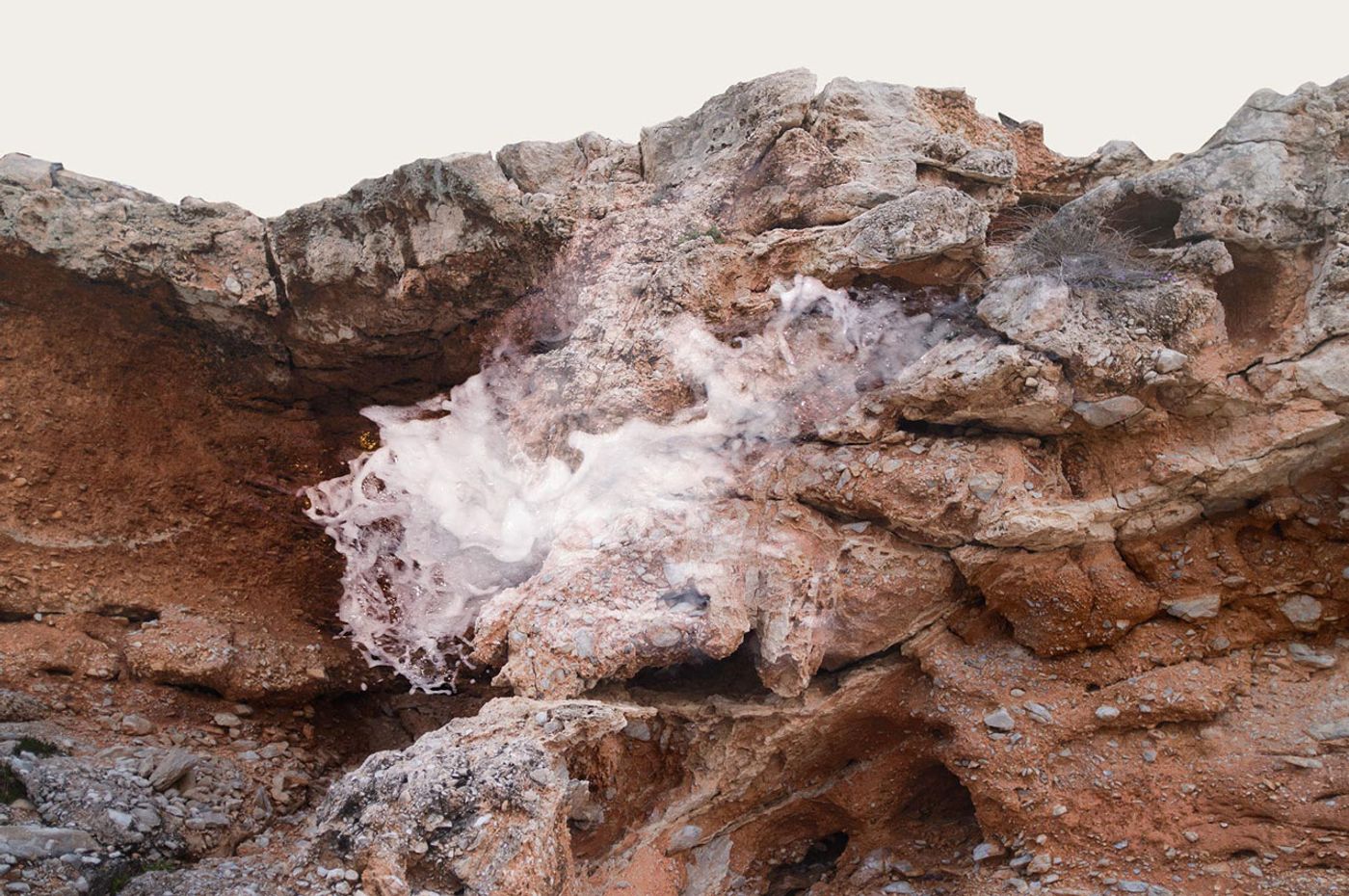
"Ubera: That howls its way inside our bodies" Photo © Petros Koublis.
Koublis’ images also have a suddenness as if they have been conjured up temporarily. This applies to both living animals and inanimate rocks: they all appear to have emerged for a moment, only to disappear in a blink — fleeting apparitions that will soon hide behind the next sinuous fold of the waving fabric of our senses. The rocks move; they depart like migrants, they travel in packs. They rise like temples and collapse like empires. The whole series is set in a world of salt, rock and dusty plains. Yet the barrenness here is not just a stylistic trait: it is also related to Koublis’ constant artistic pursuit of finding out what is essential in his craft. As he strips his work down to its very core, seeking the archetypes and forces behind each sensation, he also withdraws, daring to present the minuteness of a fleeting impression in brutal stillness. Here, even the sea seems to have been brought to a standstill, like a meditative musical piece by La Monte Young or Charlemagne Palestine.
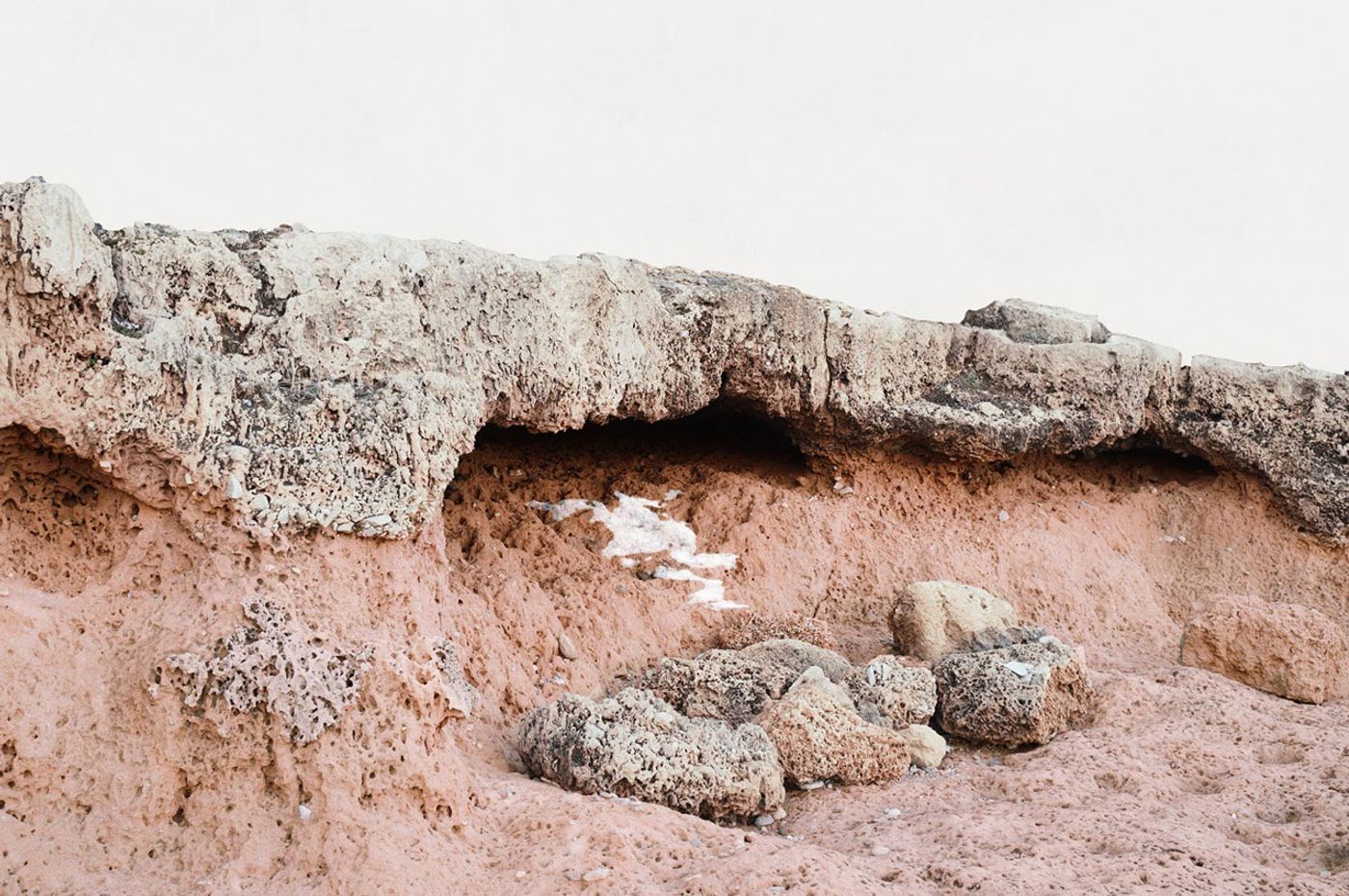
"Soporo: Some seas asleep" Photo © Petros Koublis.
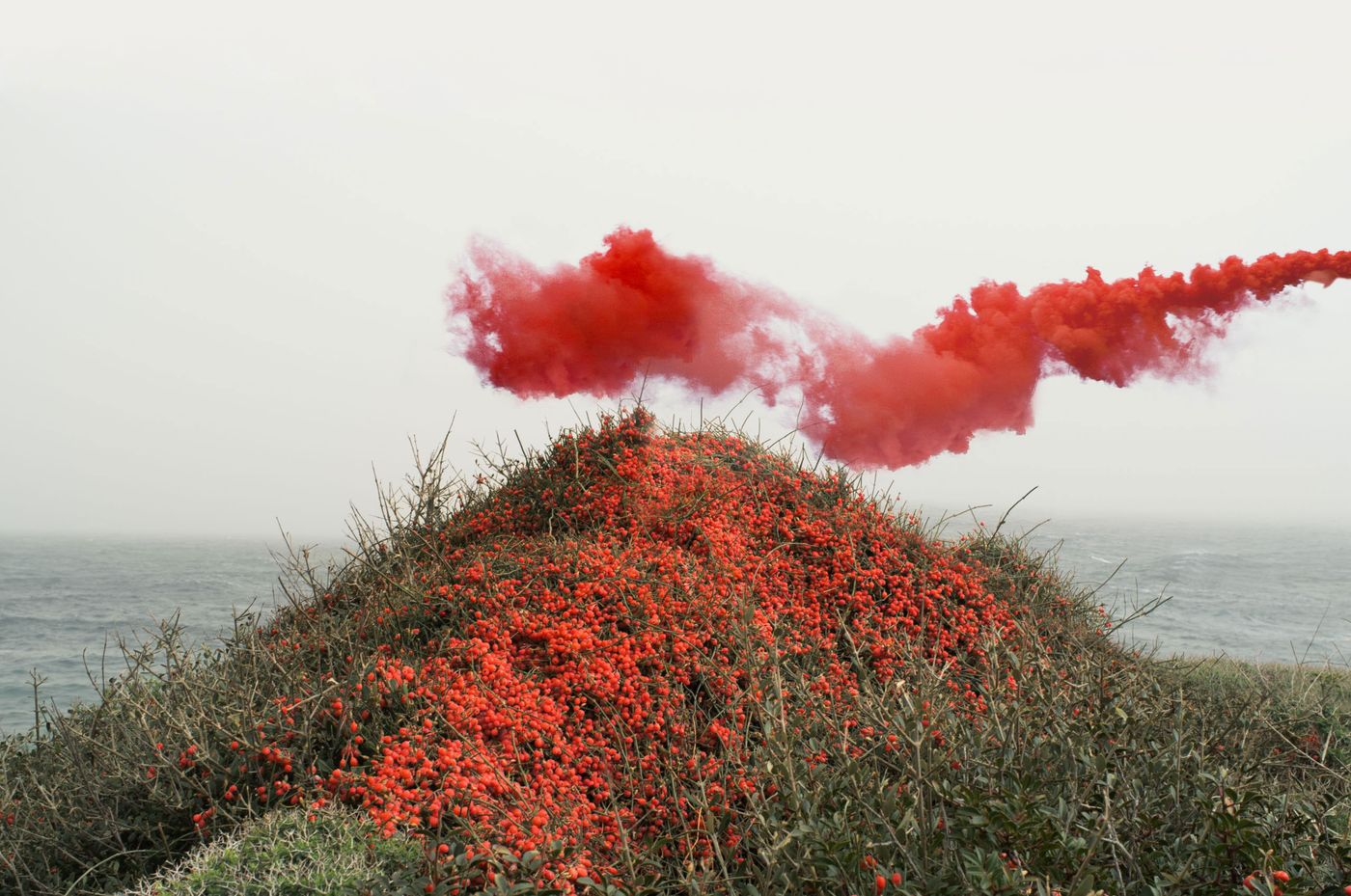
"Viscera: With the deep caress of every most shy thing and mute" Photo © Petros Koublis.
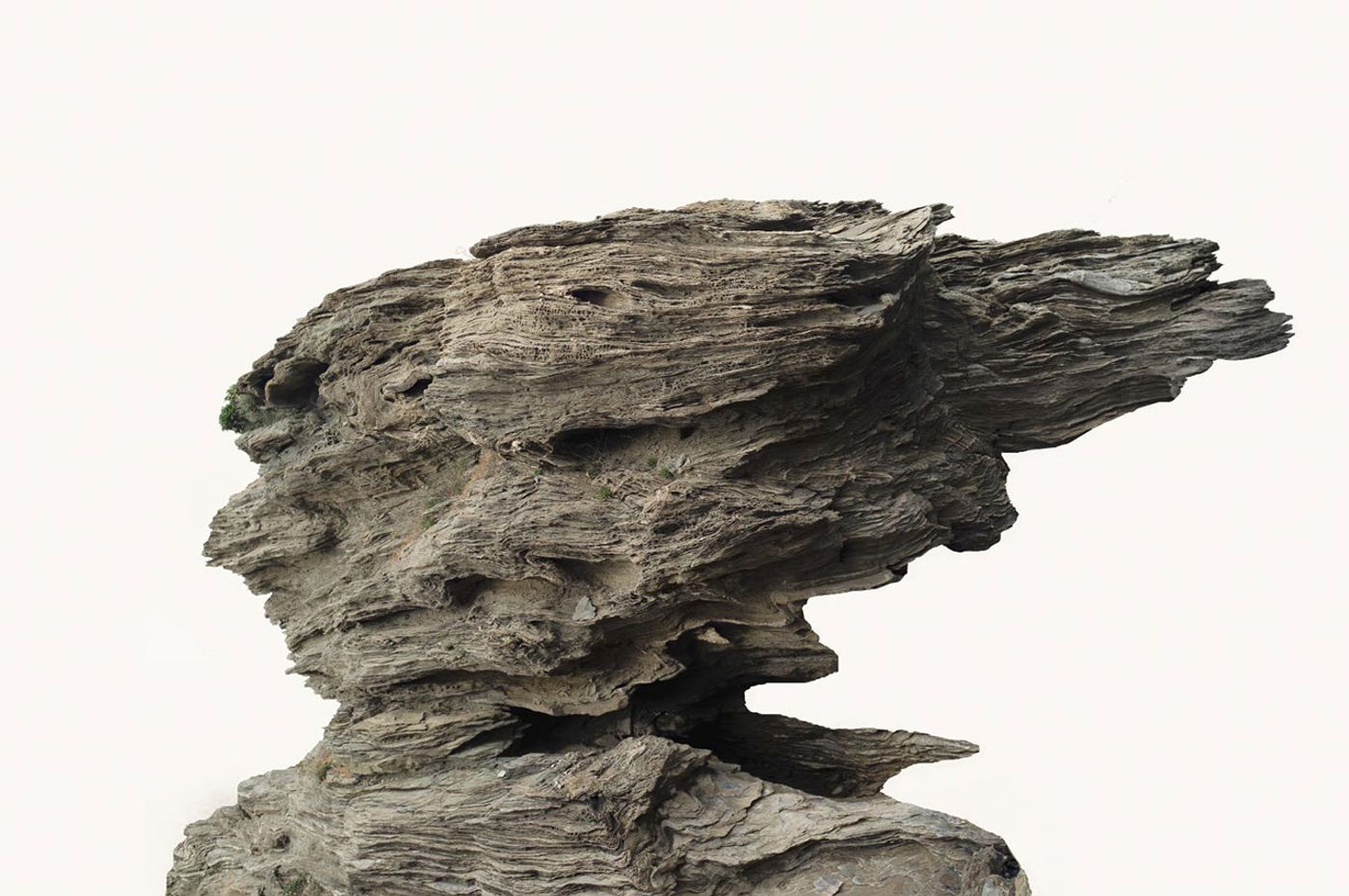
"Ángel: like body will follow" Photo © Petros Koublis.

"Adveho: If once carried the wind" Photo © Petros Koublis.
Nevertheless, there is violence in this stillness. There is violence in shedding what you know in order to observe the world “as it is.” It seems that in order to enter the mystical world of ‘In Dreams’, we need to be able to look without seeing; in other words, to observe without searching for a meaning or a message. Inevitably, melancholy ensues. What remains is us watching the world be, or as Koublis puts it, the human spirit unfurling like a wavy veil, constantly hiding and revealing itself in its ever-moving folds and creases. There are no twisted angles in the ‘In Dreams’ series, no experimental points of view. The vantage point is always calm, grounded, human. Koublis brings the essence of a dream down to something we can sense in all our humanity. The mind is then stilled, and in the stillness the world speaks to us without saying a word.
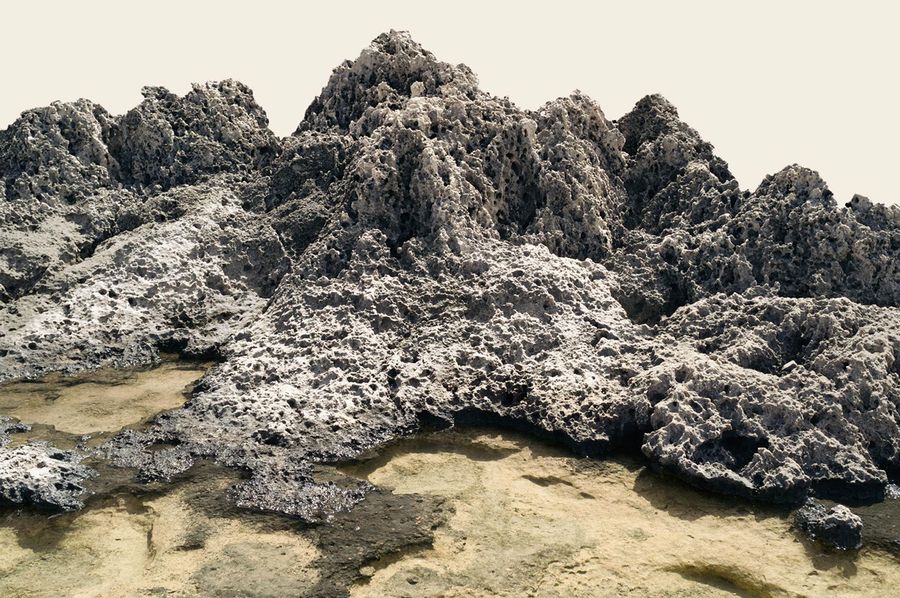
"Usque Quaque: Sea is an innocent always" Photo © Petros Koublis.

"Obumbrata: Thy fortunate fingers sometime dwell within a greener shadow of secret bowers" Photo © Petros Koublis.
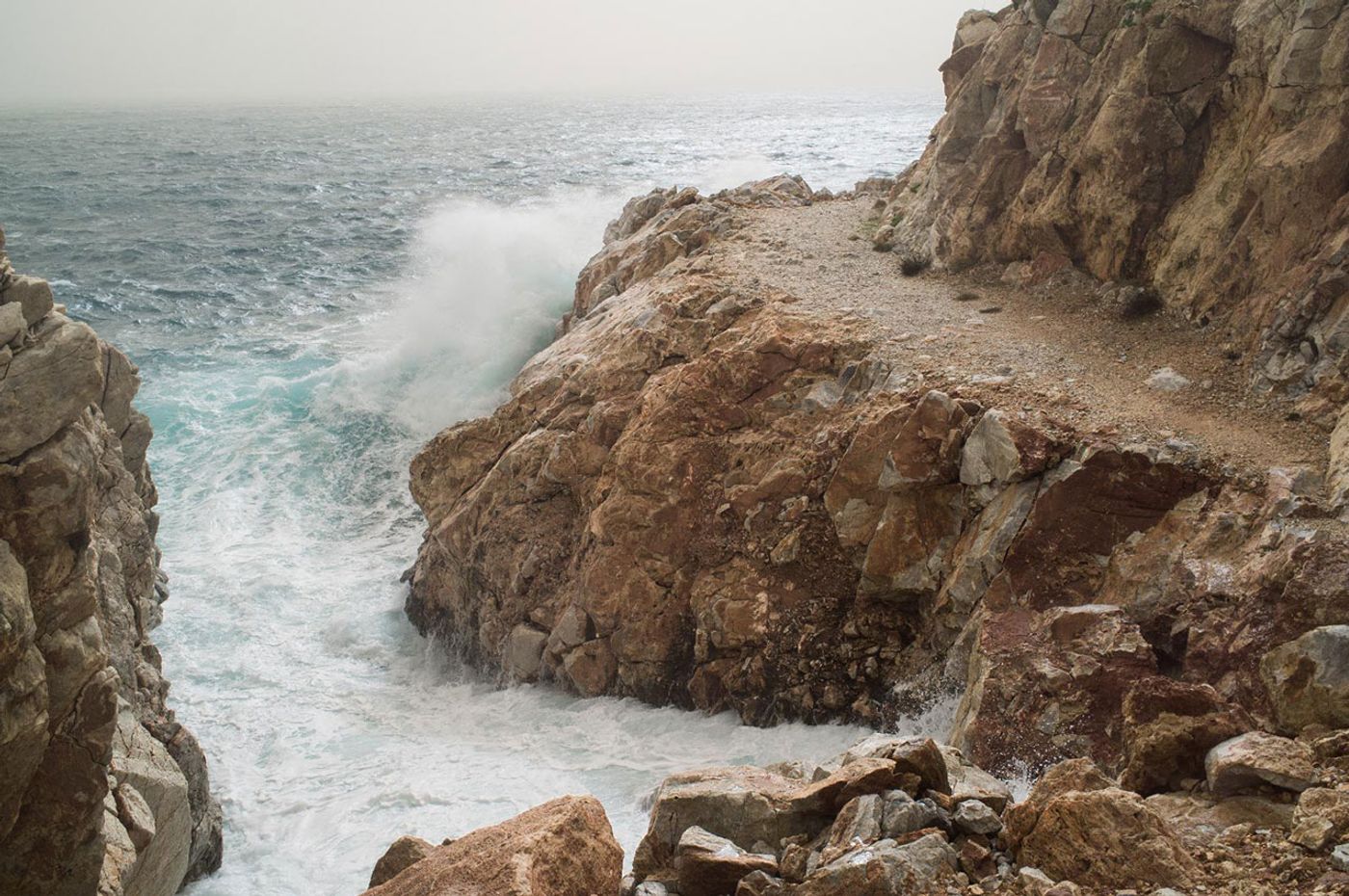
"Aculeus: Stinging gold swarms upon the spires silver chants" Photo © Petros Koublis.


